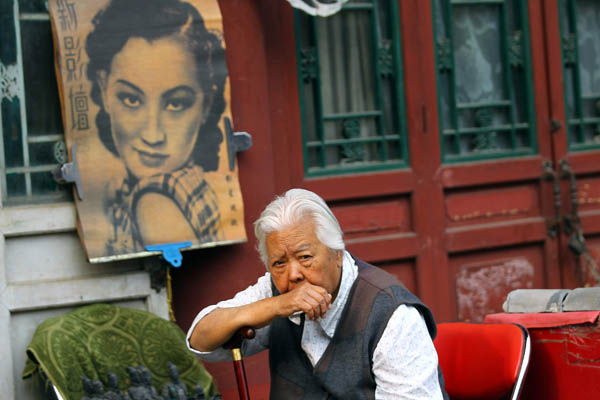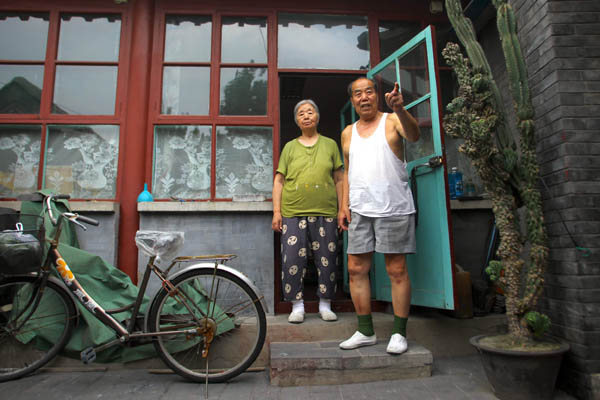
In the capital's historic Shichahai community, residents hope redevelopment plans won't destroy the hutong way of life.
For 80-year-old Ma Lingpeng and his 76-year-old wife Meng Zhaohui, living out the rest of their lives in comfort and happiness means living in their courtyard, walking around the nearby Shichahai lakes and watching their grandson growing up.
Behind a newly painted red door is their cozy, tidy courtyard home, which has two bedrooms, kitchen and bathroom, about 120 square meters.
 |
|
An elderly hutong resident at Shichahai takes a rest in the courtyard. Photos by Zou Hong / China Daily |
Located in Baimixiejie, a 200-meter-long, 5-meter-wide hutong (lane) of the Shichahai area, Ma's house is close to the Ping'an Avenue and the Lotus Market, a popular tour site on the west side of Houhai. His great-grandfather, who was a chef working for the imperial families, moved into the courtyard first and Ma's extended family has lived here for more than 200 years. Ma has three sons, who all got married and had children. His youngest son and his family live with the old couple.
"I was born and grew up here," he says, waving his bamboo fan. His face is creased with wrinkles around his eyes and mouth. "You see the trees outside our hutong? They were planted the day we got married in 1956."
Ma lives in what can be considered the old Beijing. Hidden among tall trees and gray walls, winding hutong and courtyards form the neighborhoods, where people go about everyday life. They buy daily supplies at closet-sized stores, build pigeon nests on the roofs, and visit neighbors without changing their pajamas.
 |
|
Ma Lingpeng and his wife Meng Zhaohui say they don't want to leave the hutong, where Ma's extended family has lived for more than 200 years. |
In May, the Xicheng district government announced plans to renovate the Shichahai area. Work on the project, which stretches from Drum and Bell Towers to the north and Ping'an Avenue, including the Baimixiejie Hutong area to the south, will start in September and October.
Plans include an underground square that connects with the Shichahai station of Beijing subway line 8. Two-story buildings along the southern extension of Beijing's central axis will be built in the style of Ming (1368-1644) and Qing (1644-1911) dynasties.
According to Sun Jinsong, director of Xicheng District Information Office, the total investment in this project will be 8.3 billion yuan ($1.4 billion), which covers 15.6 hectares and involves more than 1,000 families living in the area. But the number of residents who will have to move out has not been decided yet.
"We will use the same policy as in Yangmeizhuxiejie of Qianmen area, listening to local residents' wishes," says Sun, referring to the restoration of Qianmen, a well-known hutong neighborhood near Tian'anmen Square. In 2008, the once ramshackle and over-populated area is now a wide pedestrian street.
According to Sun, more than 500 families among the total number of 1,700 there were willing to move out and were given compensation for new housing.
"For those who didn't want to leave, the local government paid to improve their living conditions, such as building more public toilets, installing natural gas pipes and renovating old houses," says Sun.
